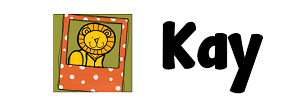.jpg)
More Sunflowers! {and a FREEBIE!}
It is the story of a young boy who plants some sunflower seeds in a circular shape. He waters the seeds and scares away birds. The sunflowers grow and eventually create a "house" for the boy to play in with his friends. But at the end of the summer the flowers begin to droop and die. At first the boy is sad, until he realizes that he can collect the seeds from the sunflowers and plant another sunflower house next spring.
After reading, we created a bubble map describing sunflowers.
And then the kids used the thinking map to create and write sentences.
We also worked on the sunflower life cycle with this cut and glue worksheet. And you can grab it for free. Just click below!

Multiple Meaning Words
We are always working on vocabulary in my classroom and last week the opportunity came up to work on multiple meanings for the word trunk. We have been studying plants so it was the perfect time!
I began by creating a tree map with the word trunk at the top. They helped by brainstorming different meanings for the word. With some teacher prompting, we came up with four different meanings for trunk.
Then they used my Multiple Meaning Words {graphic organizer} to create their own tree map using 2 of the meanings.
You can find this organizer in my TpT store.
Multiple Meaning Words - We call them m&m words and I promise my students a candy m&m when they finish filling out their graphic organizer!
I began by creating a tree map with the word trunk at the top. They helped by brainstorming different meanings for the word. With some teacher prompting, we came up with four different meanings for trunk.
Then they used my Multiple Meaning Words {graphic organizer} to create their own tree map using 2 of the meanings.
You can find this organizer in my TpT store.

All About Seeds!
Our book for the week was Seed Secrets.
After reading, we discussed the main idea and supporting details of the book.
We created a chart together and then the students worked on their own charts.
"explode, coconut float on water, stick on bears"
"stick on bears, float, fall"
"explode, stick on bears, helicopter"
I brought in a coconut this week! We learned from the book that a coconut is one of the largest seeds in the world and that it can move by floating in water.
So we explored!!! We shook it (to hear the water inside), we talked about the rough texture on the outside, and we figured out if it really would float.
So we explored!!! We shook it (to hear the water inside), we talked about the rough texture on the outside, and we figured out if it really would float.
Here it is floating!
I found this great video that showed how to easily open a coconut and I decided to attempt it!
Cracking Open a Coconut Quickly, Easily and Painlessly from Sonia! The Healthy Foodie on Vimeo.
Well...I couldn't get it to crack by using the back of a knife. So I decided to place it in a plastic bag and then smack it against the concrete outside of my classroom.
That did it! I drained out the coconut water and pried the coconut meat away from the shell. We each got to take a little taste of both the coconut water and the coconut meat. And most of the kids liked them both!
Well...I couldn't get it to crack by using the back of a knife. So I decided to place it in a plastic bag and then smack it against the concrete outside of my classroom.
That did it! I drained out the coconut water and pried the coconut meat away from the shell. We each got to take a little taste of both the coconut water and the coconut meat. And most of the kids liked them both!

Trees, Trees, and Trees!
We have been learning all about trees this week! We started off by reading a book about oak trees.
Next, we unscrambled a sentence about an acorn which included "little" which is one of the high frequency words that we learned this week. You can find my pack Unscramble This Sentence in my TpT store.
We also learned about pine trees.
I began by creating a Brace Map showing the parts of a pine tree.
Then everyone filled in their own Brace Map.
And the highlight was making these cute 3D trees from Robin Sellers (Christmas Tree Craft). We had fun making them and telling each other about the life cycle of pine trees.
We also learned about pine trees.
Then everyone filled in their own Brace Map.
And the highlight was making these cute 3D trees from Robin Sellers (Christmas Tree Craft). We had fun making them and telling each other about the life cycle of pine trees.

Subscribe to:
Comments (Atom)





.jpg)
.jpg)



.jpg)


.jpg)
.jpg)



.jpg)
.jpg)
.jpg)


.jpg)

.jpg)

.jpg)

.jpg)

